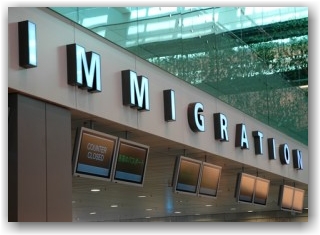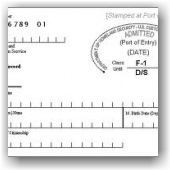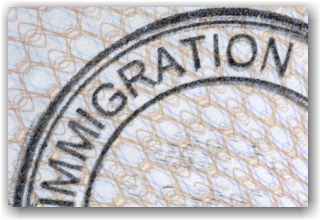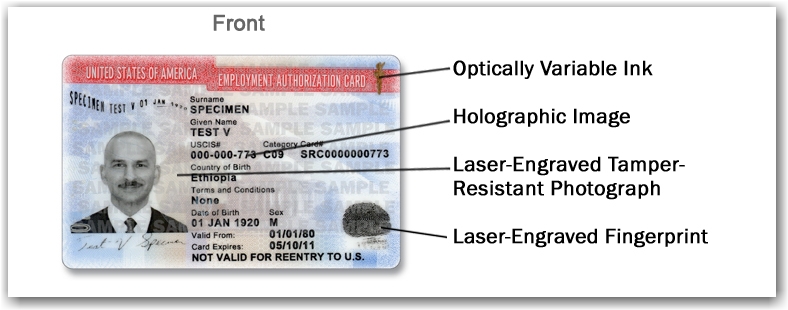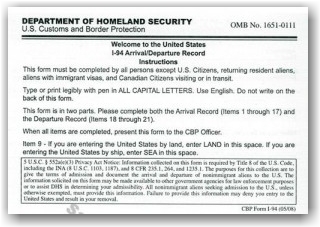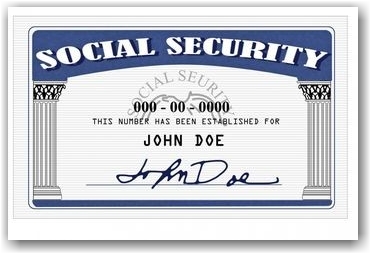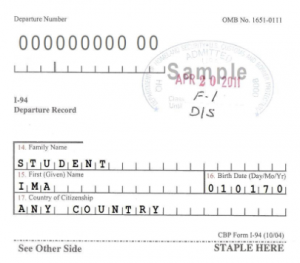New Information: I-9/E-Verify FAQ’s between AILA and ICE/HSI
Sunday, August 31st, 2014
The following are excerpts from a meeting between the American Immigration Lawyer’s Association (AILA) and ICE/HSI (Homeland Security Investigations) from November 19, 2013 that represents some material changes in regulations concerning several important issues such as pre-population, how many violations per I-9 is permitted, E-Verify and new hires, and more, as follows:
Electronic I-9s
AILA Question: In the January 2013 liaison meeting with AILA, and again in April 2013, ICE HSI indicated that pre-population of Section 1 of an electronic Form I-9 did not comply with regulations. In the April 2013 liaison meeting with AILA, USCIS confirmed that pre-population of Section 1 in an electronic Form I-9 was not acceptable, regardless of whether the company’s representative signed the translation section. AILA has received information indicating that HSI has recently announced that it has no position on pre-population of Section 1 of an electronic I-9. Can HSI please clarify for AILA what its current position on pre-population is? Does HSI consider pre-population acceptable under certain circumstances? What are those circumstances?
ICE Response: What may constitute “pre-population” varies substantially. In reviewing any specific pre-population practice, ICE will examine the company’s practices overall to determine
whether a violation occurred and a sanction should be imposed.
How many Notices of Inspection did HSI serve in 2013?
ICE Response: ICE served 3,100 NOIs.
Multiple penalties for single I-9
AILA Question: AILA members have reported that employers have been assessed separate fines for every error on one Form I-9. In other words, a Form I-9 with five errors will generate a fine that is five times more than a Form I-9 with one substantive error. OCAHO cases and ICE’s “Form I-9 Inspection Overview” Fact Sheet indicate that “the standard fine amount” is calculated against each Form I-9 with substantive violations, regardless of the number of substantive violations on the Form I-9. Please confirm that a form with one substantive error would generate the same fine as a form with five substantive errors in the same Form I-9 audit.
ICE Response: There can only be two violations per Form I-9: (1) a knowing hire, continuing to employ violation; and/or (2) a paperwork violation. Only one paperwork violation should be assessed per Form I-9. If more than one paperwork violation per I-9 is cited, attorneys should raise the issue with the ASAC or SAC.
Pervasive single error on I-9s: AILA Question: We frequently work with employers who due to a training error make the same error on the Form I-9 (such as repeatedly omitting the List C issuing authority). As it is one pervasive error, it does not indicate the more pervasive problems or potential disregard for the verification process, as would employers whose forms I-9 have many different errors. Would HIS consider adjusting its penalty matrix or making some other accommodation to take into account the fact that one common mistake on multiple Forms I-9 should not lead to the same penalty as different or multiple mistakes on the same number of multiple Forms I-9?
ICE Response: ICE is considering this issue. ICE acknowledged that one pervasive error on multiple I-9s seems like a different level of violation than wide-ranging multiple errors. ICE agreed to consider ways to address this.
I-9s for owners of closely held corporations. AILA Question: The OCAHO decision in Santiago Repacking, 10 OCAHO No. 1153 (Aug. 24, 2012) held that an owner in a closely-held corporation, who also works there and draws a paycheck, does not need to have an I-9 form. Please confirm that HSI follows this decision.
ICE Response: ICE stated that it follows all OCAHO decisions.
NOI Notices
AILA Question: The current NOI notices include language that suggests that HSI will require employers to provide access to their electronic I-9 systems. Is this a current practice? If so, what have been the results of these audits? Has HSI considered any employer’s I-9s to be uniformly invalid due to non-compliance of the electronic system used, or does HSI determine whether the electronic I-9s have substantive/technical deficiencies on a case-by-case basis for each I-9?
ICE Response: In some cases ICE has asked the employer to provide a live demonstration, not just a canned demonstration. This applies to both commercially available software and in-house applications.
E-Verify Q&A
Roll-over of employer data. AILA Question: At recent meetings, USCIS has informed AILA that future releases of E-Verify would enable an employer who terminates its MOU (at least for reasons of merger or change in designated agent) to have continued access to its prior E-Verify records and allow transfer of historical data to the updated account. What is the status of this development? If an employer with a terminated MOU needs access to historical E-Verify information, what is the process for obtaining it?
USCIS Response: There is currently no mechanism for an employer to continue to have access to E-Verify data after termination of an MOU. Once an account is closed, all access to the account and its associated records are terminated. USCIS is developing a method and/or feature for the retention of historical E-Verify data, but there is no tentative date set for this enhancement. At this time, the best workaround to preserve E-Verify records is for the employer and E-Verify Employer Agent to create and retain a complete user audit report for themselves and their clients. From within the Administrator’s functions, an employer can create an Excel spreadsheet with all of the information. Note that this report would not relieve the employer’s responsibility under the MOU for either copying the E-Verify receipt number on the Form I-9 or attaching the E-Verify record to the form.
AILA Question: What if an electronic I-9 vendor or Employer Agent goes out of business: can an employer have direct access to the information?
USCIS Response: Under data privacy rules, E-Verify is required to “archive” old data, which essentially means that the data is no longer available. The protocol anticipates archiving at the ten year anniversary of data collection, but so far, only pre-1996 data is subject to immediate archive. Eventually all E-Verify data will be subject to archiving rules. Verification recommends as a best practice that employers print-out and retain the E-Verify records.
E-Verify and Re-hires
AILA Question: It appears that Verification recognizes that an E-Verify query is not always necessarily a rehire situation where the employer is allowed under I-9 regulations at 8 CFR §274a.2(c)(1)(i) to continue to rely on the re-hired employee’s original I-9. The following guidance is posted in E-Verify FAQs:
Do I need to create a case in E-Verify if my company rehires an employee?
If you rehire a former employee within three years of his or her previous hire date, you may rely on the information on his or her previous Form I-9. If you rehire an employee for whom you never created an E-Verify case and the employee’s and the employee’s previous Form I-9 lists an expired identity document (List B), then you may either:
– Complete Section 3 of the employee’s previous Form I-9 and not create a new case for the employee in E-Verify or
– Complete a new Form I-9 for the employee and create a new case for the employee in E-Verify
See the Handbook for Employers: Instructions for Completing Form I-9 (M-274) for more information on rehires. The above guidance, however, does not address the proper way for an employer to treat employees in the most common rehire circumstances – (1) where the rehired employee was not subject to E-Verify at the time of the original hire; and (2) where a rehired employee was previously run through E-Verify and does NOT have an expired identity document. The current guidance suggests, but does not state explicitly, that an E-Verify query based on the rehire date is required in situation (1) and that an employer should not re-query the rehired employee in (2). It was suggested that USCIS provide further clarification to the E-Verify rules for rehired employees and suggested the following amendment to the FAQ as follows:
An employer may rely on previous E-Verify queries for rehired employees in certain circumstances. If you rehire a former employee within three years of his or her previous hire date, you may rely on the original Form I-9 as long as the work authorization (List C) documentation originally presented by the employee is still valid. If the rehire date is more than three years from completion of the original I-9, or if the employee’s work authorization has since expired, you must complete a new I-9 and run a new E-Verify query using the rehire date as the date of hire. For purposes of E-Verify, where the employer can rely on the original I-9 and the rehired employee was subject to an earlier E-Verify query, you may continue to rely on the earlier query. If the rehired employee was not previously subject to an E-Verify query and the employee’s identity document is still valid, you may run the E-Verify query based on the data in the original I-9, but using the rehire date as the E-Verify hire date. If, however, the rehired employee’s identity document (List B) has expired, you cannot run an E-Verify query as the system will not accept expired documents. In that case, then you may either:
– Complete Section 3 of the employee’s previous Form I-9 and not create a new case for the employee in E-Verify or
– Complete a new Form I-9 for the employee and create a new case for the employee in E-Verify, using the rehire date as the E-Verify hire date.
USCIS Response: USCIS updated the rehire section in the newest version of the E-Verify user manual and now provides the following guidance:
If you never created a case in E-Verify for the employee, you must have the employee complete a new Form I-9 and create a case in E-Verify. If you previously created an E-Verify case, but did not receive an employment authorized result, you must have the employee complete a new Form I-9 and create a case in E-Verify. If you previously created a case in E-Verify for the rehired employee and received an employment authorized result, complete Section 3 of the employee’s previous Form I-9 and do not create a new case for the employee in E-Verify. Alternatively, you may choose to complete a new Form I-9 and create a case for the employee in E-Verify. Employers are reminded that if you rehire your employee within three years of the date that the initial Form I-9 was completed, you may complete a new Form I-9 for your employee or complete Section 3 of the previously completed Form I-9. If more than three years has elapsed since the initial Form I-9 was completed, employers must complete a new Form I-9 for a rehired employee and create a case in E-Verify for the rehired employee.
That’s all for now. We will continue to update as announcements are made concerning new interpretations concerning I-9/E-Verify compliance matters.


